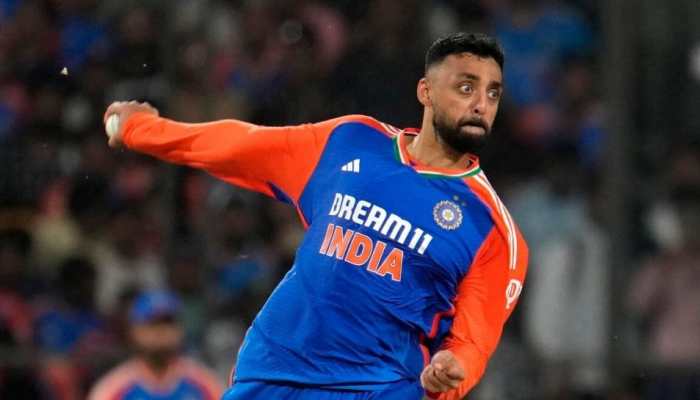Is China still flexing its muscles in Doklam?
China is also reportedly building bunkers and a road on the Doklam Plateau, just 10 km from the location of the last conflict.
Trending Photos
)
New Delhi: Days after it was reported that the Doklam border stand-off with China was resolved diplomatically, it has now come to fore that Beijing is still flexing its muscles and has deployed more troops in the Chumbi Valley.
According to media reports, a large number of troops belonging to China's People’s Liberation Army (PLA) is still stationed a few hundred metres away from the Dokla stand-off site on their side. China is also reportedly building bunkers and a road on the Doklam Plateau, just 10 km from the location of the last conflict.
It is to be noted that the Doklam Plateau is claimed by both Beijing and Bhutan as their territory.
Meanwhile, Indian Air Force Chief BS Dhanoa, in a press briefing today, also confirmed the presence of the Chinese troops in the Chumbi Valley in the Dokalam Plateau.
However, he appeared confident that a peaceful resolution of the issue with China was still possible.
Dhanoa, while stating that the stand-off with China can be resolved diplomatically, ruled out any possibility of a military face-off with the neighbouring Communist state.
"The two sides are not in a physical face-off as we speak. However, I expect the Chinese troops to withdraw from Chumbi Valley as their exercise in the area gets over," Dhanoa told reporters ahead of IAF Day, which is marked on October 8.
Dhanoa also rejected concerns regarding India's military preparedness vis-a-vis Beijing and said that the IAF is capable of effectively countering any threat from China and Pakistan simultaneously in a two-front war.
Indian and Chinese troops were locked in an over two-month-long standoff after India stopped the construction of a road by China in Dokalam in the Sikkim sector on June 16.
Asked about concerns over Pakistan's tactical nuclear weapons and whether the IAF would be able to disarm Islamabad of its nuclear arsenals if necessary, Dhanoa said his force had the capability of locating, fixing and striking across the border.
Asserting that the IAF was capable of a two-front war to counter China and Pakistan, he, however, said the possibility of such a scenario was "low".
At the same time, he added that India's response had to be based on the enemy's capability as intentions could change overnight.
"We need a strength of 42 squadrons to carry out full spectrum operations in a two-front (war) scenario. It does not mean that we are not capable of fighting a two-front (war) as we speak. We have a plan B," Dhanoa said.
Army Chief Gen Bipin Rawat had said last month that the country should be prepared for a two-front war, insisting that China had started "flexing its muscles", while there seemed to be no scope for a reconciliation with Pakistan whose military and polity saw an adversary in India.
Currently, the IAF has 33 fighter squadrons and Dhanoa said the force would get the authorised strength of 42 fighter squadrons by 2032.
Asked whether the IAF was ready for a surgical strike across the border, he said it was ready to deal with any challenge and a call to such an operation would have to be taken by the government.
"Surgical strike is a decision that has to be taken by the government. The IAF has the capability to carry out the full spectrum of air operations," he said.
He said a war-like situation may arise if the IAF crossed the border.
On whether the IAF provided any support to the Army for the surgical strike last year and during the Dokalam face-off, the IAF chief said, "Whatever was asked from the Air Force was provided".
He refused to share further details.
The IAF chief, however, said no air force assets were involved during the Myanmar operation and the surgical strike across the LoC in Jammu and Kashmir last year.
"The IAF is prepared to fight at a short notice in full synergy with the other two sister services should the need arise," he said, adding that the force was in a high state of readiness to fight a war.
About a possible confrontation with China, he said India's air power was "adequate". At the same time, he talked about what China could or could not do from Tibet.
"Our capability is adequate," he said.
The IAF Chief also spoke on a range of issues including steps being taken to enhance the strike capability of the force such as the acquisition of S-400 'Triumf' long-range air defence missile systems from Russia and 36 Rafale combat jets.
He said the contract for five S-400 missile systems would be signed soon and their delivery would start two years after the deal was struck.
The IAF Chief also talked about the mid-life upgrading of Mirage 2000, MiG 29s and Jaguar fleets, adding that the IAF was working to fully achieving a network-centric operational capability.
Dhanoa said a proposal for 83 indigenously built Light Combat Aircraft Mark I was being finalised, adding the force is getting 40 Light Combat Aircraft (LAC) and an RFP (request for proposal) for 83 more LCA will be issued.
He said the IAF would be getting 36 more Sukhoi jets and their delivery would start from 2019.
Dhanoa also said test firing of the Brahmos missile would start from next month.
The Brahmos supersonic missile systems are being integrated with the Sukhoi-30 MKI frontline fighter jet.
Referring to a string of accidents involving the IAF's choppers and aircraft, Dhanoa said, "Our losses in peacetime are a cause of concern. We are making concerted efforts to minimise accidents and preserve our assets".
He said security at all the IAF installations had been significantly enhanced after last year's terror attack on the Pathankot base. The steps included putting in place an integrated perimeter security system and buying lethal weapons.
"These men and women under my command are confident of taking on any threat and are fully prepared to undertake the full spectrum of air operations and respond to any challenge in the most befitting manner," said Dhanoa.
When asked about the Army chief's two-and-half front war comment also referring to internal security threats, Dhanoa said, "As a democracy we don't use kinetic air power against our own people."
With PTI inputs
Stay informed on all the latest news, real-time breaking news updates, and follow all the important headlines in india news and world News on Zee News.
Live Tv







)
)
)
)
)
)
)
)
)
)
